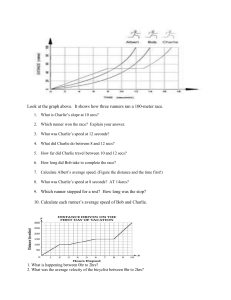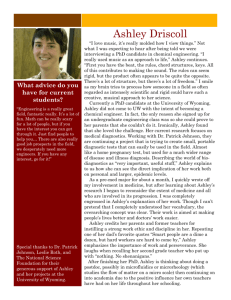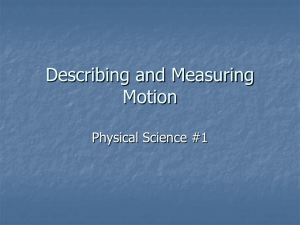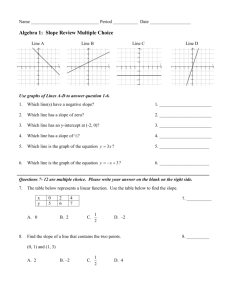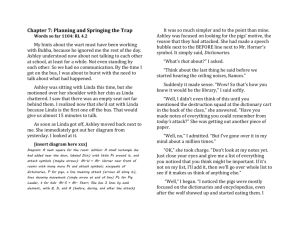Distance-Time Graphs Worksheet: Motion & Speed
advertisement
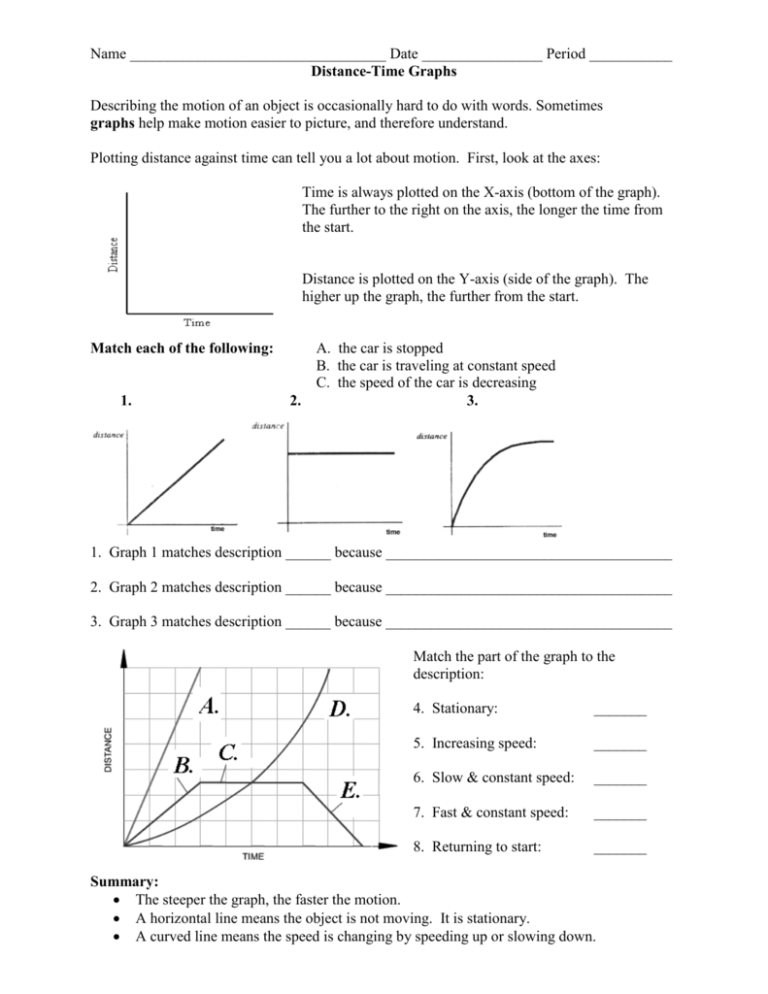
Name __________________________________ Date ________________ Period ___________ Distance-Time Graphs Describing the motion of an object is occasionally hard to do with words. Sometimes graphs help make motion easier to picture, and therefore understand. Plotting distance against time can tell you a lot about motion. First, look at the axes: Time is always plotted on the X-axis (bottom of the graph). The further to the right on the axis, the longer the time from the start. Distance is plotted on the Y-axis (side of the graph). The higher up the graph, the further from the start. Match each of the following: 1. 2. A. the car is stopped B. the car is traveling at constant speed C. the speed of the car is decreasing 3. 1. Graph 1 matches description ______ because ______________________________________ 2. Graph 2 matches description ______ because ______________________________________ 3. Graph 3 matches description ______ because ______________________________________ Match the part of the graph to the description: 4. Stationary: _______ 5. Increasing speed: _______ 6. Slow & constant speed: _______ 7. Fast & constant speed: _______ 8. Returning to start: _______ Summary: The steeper the graph, the faster the motion. A horizontal line means the object is not moving. It is stationary. A curved line means the speed is changing by speeding up or slowing down. Distance-Time Graphs Use the following paragraph and graph to answer questions 1 through 6. On Saturday, Ashley rode her bicycle to visit Maria. Maria’s house is directly east of Ashley’s. The graph shows how far Ashley was from her house after each minute of her trip. 1. Ashley rode at a constant speed for the first 4 minutes of her trip. What was her constant speed? _____________________________________ _____________________________________ 2. What was Ashley’s average speed for the entire trip? _____________________________________ _____________________________________ 3. What was her average velocity for the entire trip? ______________________________________________________________________________ 4. Ashley stopped to talk to with another friend during her trip. How far was she from her house when she stopped? ______________________________________________________________________________ 5. What is the slope of the line after Ashley stopped to talk with her friend? ______________________________________________________________________________ 6. How is the slope of the line related to her speed? ______________________________________________________________________________ Vocabulary Practice 7. An object is in _____________________________ when its distance from a(n) __________________________is changing. 8. Speed in a given direction is __________________________________. 9. ___________________________ can be calculated if you know the distance an object travels in one unit of time. Key: Part I: 1. B. Linear line/constant slope 2. A. Zero slope/horizontal line 3. C. Nonlinear line/slope is decreasing 4. C 5. D 6. B. 7. A 8. E Part II: 1. 200 meters/minute 2. 160 meters/minute 3. 160 meters/minute east 4. 800 meters 5. 400 meters/minute 6. the slope equals her speed 7. motion/reference point 8. velocity 9. speed
